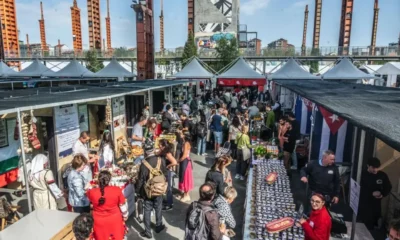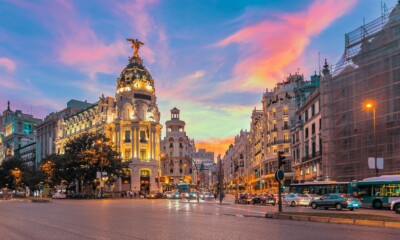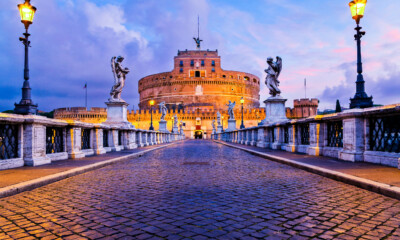Home » Interviews » Roberto Pazzi, an Italian Photographer, to Arabisk London: My Flashes Represent Diversity and Beauty, and My Heroes Are Fascinated with Rituals of Amazement and Prosperity
Interviews
Roberto Pazzi, an Italian Photographer, to Arabisk London: My Flashes Represent Diversity and Beauty, and My Heroes Are Fascinated with Rituals of Amazement and Prosperity
Published
11 months agoon
By
Huda
Roberto Pazzi: My Flashes Represent Diversity and Beauty, and My Heroes Are Fascinated with Rituals of Amazement and Prosperity.
Interviewed by: Mohsen Hassan
International photographer Roberto Pazzi specializes in travelling and safari trip photography, planning, and management, often referred to as a “bounty hunter.”
In just four years, his photographs gained recognition for their unique subjects, technical proficiency, and cultural reflections. His focus on examining customs, traditions, and rituals of different nations and settings led to numerous major accolades, showcasing the unique and expressive origins of peoples and groups.
Born in Milan in 1973, Pazzi pursued a degree in engineering and communications technology, but found his true passion in travel, observing aspects of far-off cultures and interacting with diverse tribes and peoples within their unique societal and human contexts.
The photographer stands out for his all-encompassing approach to photography, showcasing the diversity and richness of people and human endeavours, earning him high respect from critics, his generation, camera innovators, and international competitions.
His artwork is displayed in numerous venues across Italy, Singapore, and Brazil, and his photographs are widely disseminated through international media.
Roberto Pazzi, an Italian photographer and travel planner, currently lives in Spain and works with the Nomad Photo Expeditions Foundation, capturing travels to remote locations and Bedouin communities.
Arabsik London interviewed Roberto Pazzi, where he shared his delight in visiting the UK and photographing his favourite spot and offered advice to travel, adventure, and photography enthusiasts, especially those who enjoy perilous surroundings.
First, what does “sacrificing for the image” imply to Roberto Pazzi? What else have you sacrificed?
I changed my life drastically years ago to fulfil my dream of dedicating myself to travel and photography full-time. To start over and rebuild my life from scratch, I had to leave my home country of Italy and make significant sacrifices.
I did this after earning an engineering degree, working for 15 years in information and communications technology companies, and achieving a lifestyle with financial security, an administrative job, and a prestigious and recognised social role.
As a travel photographer, what hazards and problems do you encounter in your continual journeys and snaps across many environments? How would you handle that?
I frequently find myself in places with social, political, and health issues since I am a travel photographer who is passionate about the customs and traditions of people and minorities.
As a result, there are significant security risks for both me and my companions. I therefore make every effort to stay away from hazardous situations, disputes, and security difficulties when documenting them.
My passion for photography, which focuses mostly on preserving endangered cultures and customs rather than risky scenarios and violent confrontations, motivates me to stick with this.
Although I have been in these circumstances numerous times, this does not imply that I am immune from them; rather, I have always placed a higher priority on leaving them as soon as possible than on documenting them at the price of my safety.
Broadly speaking, I am aware that responsible and appropriate camera documentation necessitates caution and professionalism, and I uphold these standards in my travels and photography; my safety and the safety of others are of utmost importance, so I constantly evaluate risks and take the necessary precautions to avoid them.
This way, my primary objective—preserving cultural and social legacy and promoting awareness and appreciation of the world’s human diversity—remains front and centre, something I work diligently, safely, and professionally to accomplish.
Which is more appealing to Roberto Pazzi: photography of humans or animals and birds? And why?
My goal is to shoot travel and journeys from a narrative and anthropological perspective, with “human beings” as the primary focus. For me, photographing a person in his daily life is a way to tell his tale, or, more often than not, an artistic approach to bringing society and its underlying culture together.
I so travel not simply to capture photographs, but also to record traditions and gather testimonies for these photographs. It presents individuals, recounts their life stories and feelings, and elucidates their customs and backgrounds.
I believe that photography has the power to bring back memories and encourage others to appreciate and learn about cultural variety. Travel photography, in my opinion, is also a very meditative means of global exploration and human-to-human communication.
Therefore, at the moment, my first concern when choosing to take a picture of someone is that the picture should convey the subject’s essence, his emotions and environment, and his unique position within the human race.
In other words, it’s not only about capturing stunning photos; it’s also about using photography as a creative and thought-provoking tool that fosters successful cross-cultural and cross-national communication.
Please provide me with a quick description of the most bizarre African tribe customs you witnessed and photographed.
Africa is a continent rich in unique and authentic cultural traditions. Throughout my travels, I experienced a plethora of these customs and traditions that profoundly impacted me, ranging from the lip plate tradition practised by the women of the Mursi tribe in the Omo Valley to the rituals practised by the Mundari tribe in South Sudan, wherein they bathe in cattle urine and witness the sun’s rays turning their hair a bright orange colour.
Then there are the Zaouli dance traditions, which honour the beauty of women among the Guro tribes in Ivory Coast and Chad (known as the Gerewol Festival). Young men congregate in ornate costumes and don traditional face paint to dance, sing and draw the attention of young, single ladies.
In addition, there’s the (bull jumping) ceremony, which symbolises how an Omo tribe in Ethiopia raises its young to adulthood by passing the test of running on the backs of bulls. It culminates in the ornate hairstyles and jewellery that Himba women in Namibia wear, as well as the common practice of engraving scars and facial tattoos in many societies.
I observed and experienced all of these and other things while living in Africa; they contribute to the social and cultural diversity of the continent and serve as a human reminder of how diverse and beautiful the globe is.
Which equipment is most essential for a trip photographer? How is a travel photographer different from other photographers?
From a purely technical standpoint, travel photographers don’t require any particular gear or instruments, unlike their colleagues who engage in other forms of photography.
The trip-specific equipment is the most crucial, as is the case with my ethnic and tribal photography of minorities; additionally, a backup camera and plenty of batteries, memory cards, and power adapters ensure backup solutions for images and other devices in case of power outages or other emergencies.
The lighter the equipment you bring, the easier and better the trip will be to plan and accomplish its exploratory and documentary goals. All these methods are really important when compared to other worries and tools. Naturally, the photographer needs to use caution, particularly if the location is far from a city, impoverished, or rural.
Which photography approaches play a major role in your decision-making? When you’re assigned photography tasks, how does Roberto Pazzi handle the challenges posed by light and surroundings?
Technically speaking, to be able to tell a compelling story with the image, I need to take great care in selecting the subject and content, as well as adjust and provide interesting lighting and absorption positions. I also need to figure out what depth of field and colour contrast are appropriate for the given situation.
Furthermore, I believe that in addition to camera management techniques, photographing human subjects and their subjects calls for what are known as the photographer’s “soft skills,” the features and workings of which are contingent upon the story the photographer hopes to convey with the images and shots.
The photographer’s aptitude and competence in handling and interacting with the subject and material he is photographing is crucial in this regard, and it is one of the fundamental and essential aspects of the photographer’s job.
For instance, if the goal is to capture an expressive shot of a street scene in daily life, most of the time to get good shots, the subjects of the photography must not sense the presence of the photographer.
Likewise, when taking environmental photos of people, the photographer must engage with the people in the frame of his lens beforehand to build mutual trust about the subject of the shot, which frequently contributes to better, positive outcomes.
Which simple picture got Roberto Pazzi started on the reward ladder? Why did you choose to take this particular picture?
One of my early-career photos was taken in West Papua in 2013, and it was picked up by the British press. This image is part of an ongoing initiative to document the Dani ethnic group, who were only discovered in the middle of the Indonesian portion of the island of Papua in 1938 and live in relative seclusion.
The Mundari tribal people in the photos I took for my 2020 report on South Sudan are among the best-known images to win numerous international accolades.
A few weeks ago, one of the most prestigious awards I have ever received—the 21st Annual Smithsonian Magazine Photography Award—was given to a picture of me that I took in August 2023 of members of the Huli tribe in the mountains of Papua, New Guinea.
Undoubtedly, the driving force behind all of these images is my unwavering passion for capturing the customs and cultures of minor ethnic groups, which stand in for a priceless piece of human legacy that is on the verge of disappearing from our grasp.
Do you enjoy photographing celebrities? Who are the people who have had a significant human impact on you?
Generally speaking, I’m not interested in taking pictures of celebrities. I dedicate my time to documenting and promoting lesser-known cultures and peoples, as I have mentioned previously.
However, I can only name a few people who, in my opinion, have had a significant beneficial influence on modern history: Martin Luther King, Nelson Mandela, and Gandhi.
I would also like to mention a few names of photographers who commit their lives to protecting the planet Earth. One such photographer is Sebastião Salgado, a legendary Brazilian who founded the Instituto Terra with his wife to reforest Brazil. Over the past 20 years, the organisation has planted millions of trees, restoring the Aimorés region.
The founders of SeaLegacy, an organisation dedicated to preserving the oceans and regaining their significance for the benefit of people, biodiversity, and climate security, are Cristina Goettsch Mittermeier and Paul Nicklen.
How would Roberto Pazzi advise someone just starting out in the world of travel photography? Have you considered releasing an instructive book in this area?
My main recommendation to them is to concentrate on practical practice instead of wasting money on the newest technologies. First and foremost, one needs to understand and determine the nature of preferences, talents, and desires.
As a result, the novice needs to figure out what he enjoys and finds appealing among the many subfields of photography, all of which are intricate and require exploration.
However, to be able to experiment and break out from a cycle of hesitancy and personal fears—particularly with regard to the opinions of others—the amateur photographer must possess a measured and deliberate daring.
To convey what he wants to use in his work, a photographer generally needs to know what he likes and identify his favourite or unique style. To that end, I believe that studying is important, and the Internet is a very large resource that offers all the information a student could require. Students can also gain inspiration and knowledge by perusing the works of other photographers.
To all aspiring beginners in photography, I advise you to start with a long-term project and let your enthusiasm drive you. Break down your project into manageable daily and phased tasks, and strive to learn something new every day. You will eventually finish what you started, and ultimately, you will discover your creative self, which is the most crucial thing.
Which locations in Saudi Arabia and the United Kingdom piqued Roberto Pazzi’s interest?
Regarding the Kingdom of Saudi Arabia, while it’s on my list of places to visit, I’ve never had the opportunity. Hopefully, this will change very soon.
Regarding the UK, I visited a lot of locations that piqued my interest and took pictures of them, but Edinburgh, with its rich history, beautiful architecture, and unique atmosphere, is maybe one of the locations that most deeply affected me.
Lastly, who in the travel photography industry is your mentor and role model? Which honour, if any, brought you the greatest joy upon receiving it?
The names that have served as my primary sources of inspiration during my adventure in the great world of photography have been the esteemed instructors; I would like to specifically mention Sebastian Salgado, Steve McCurry, Jimmy Nelson, and Michael Yamashita.
Concerning honours, I just started competing internationally in 2020 since the COVID-19 pandemic prevented me from travelling.
Despite this, I had the good fortune to win multiple international awards in a short amount of time, including the Natural Density Photo Awards, Paris Awards for Photography, Budapest International Photo Awards, Tokyo International Image Awards, Annual Photo Awards, Moscow International Photo Awards, Vienna International Photo Awards, and others.
My recent victory in the excellent yearly competition held by Smith-Sonian magazine, which I won just a few weeks ago, was, if I had to choose one favourite award, the one that made me the happiest.
You may read about Masoud Kibwana to Arabisk London: Saudi Arabia’s Arts are Booming, and my Wish is to Fortify Artistic Connections Between Riyadh and Dar es Salaam

Nammos Resort AMAALA: KSA’s New Address for International Luxury Hospitality
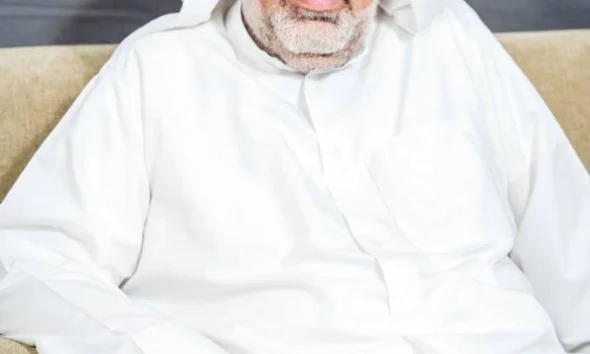
Muhammad Mahfouz: Trump will Respond to Riyadh’s Ambitions, and We Must Develop a Gulf-Arab Project with Iran

The World Stadiums & Arenas Summit 2025 has Arabisk London – Saudi Arabia as a Media Partner
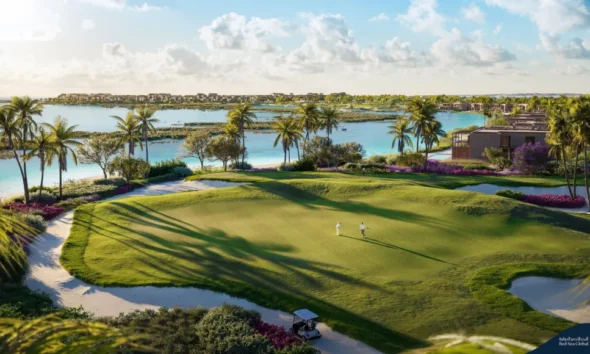
Laheq: The First Private Saudi Island to Obtain Light at Last
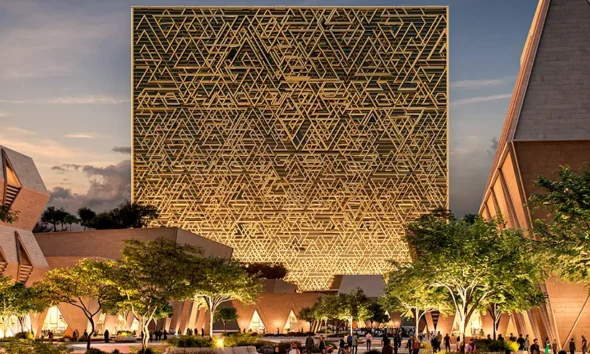
The “New Square” Alters the Modern Life’s Notion in Riyadh







